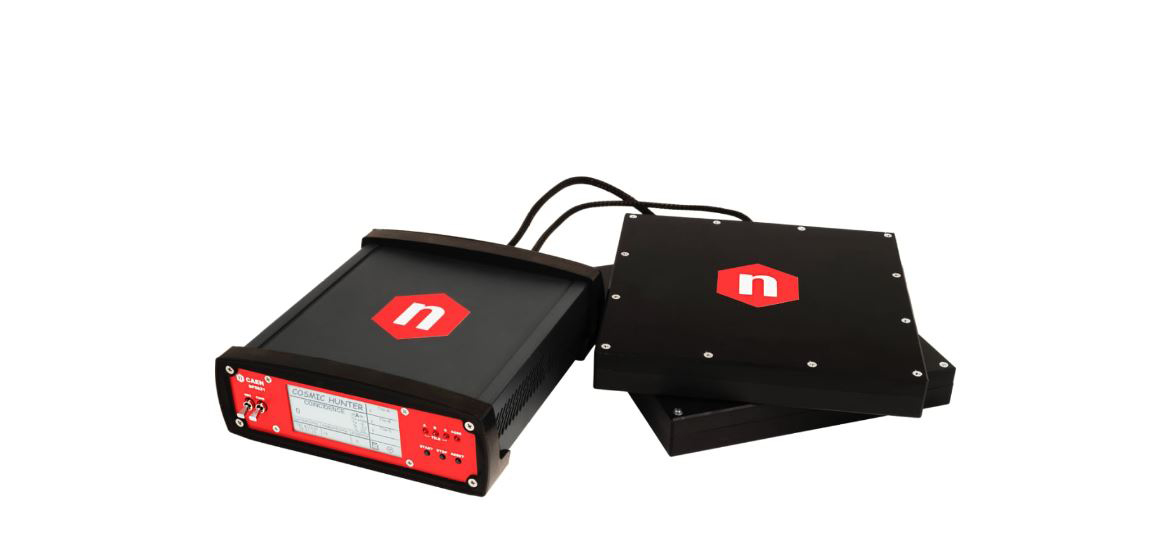| Difficult | Execution Time | Data Analysis | Radioactive Sources |
|---|---|---|---|
| Yes | No |
Hardware setup
This experiment guide is referred to the SP5620CH educational kit.
This experiment is also possible with the SP5609 – Telescope Mechanics or a similar structure
Equipment: SP5620CH – Cosmic Hunter
| Model | SP5621 | SP5622 (x2) |
|---|---|---|
| Description | Coincidence Module | Detection System |
Purpose of the experiment
Measurement of the zenith dependence of the cosmic ray flux as a function of altitude. The goal of the experiment is to analyse zenith dependence by performing a series of measurements at different zenith angle values.
Fundamentals
Most muons are produced in the upper atmosphere, typically 15km above the surface of the earth. Muons typically lose about 2 GeV to ionization before reaching the ground. The average energy of muons on the ground is around 4 GeV. When their decay (Eμ> 100 / cosθ GeV) and the curvature of the Earth (for θ> 70°) can be disregarded the flux of cosmic muons can be expressed as follows:

Where θ is the zenith angle, and the two terms in the brackets indicate the contribution of the charged pions and kaons. For Eμ ∼ 3 GeV, the angular distribution of muons is proportional to cos2θ at sea level. The intensity of cosmic muons is only determined by the angular dependence of the zenith on their energy spectrum and their energy. As first approximation, the dependence of the muon flow from ϕ is considered negligible, which is in fact less than 10% [RD5].
Carrying out the experiment

Experimental setup block diagram
- Set up the SP5609 on a desk or table and assemble the two SP5622 on the vertical arm [RD1].
- Connect the cable connectors of the two SP5622 to the tile inputs located on the rear panel of the SP5621 module.
- Power on the SP5621 module and start the acquisition via the front panel START button. When a charged particle crosses the black tile it’s energy is converted into scintillation light. The photons which are produced are detected by the photosensor and converted into an electrical signal. The number of counts for each scintillator may be viewed via the SP5621 display.
- Select double scintillators coincidence mode via the related button on the front panel, and then select measurement integration time. Because the acquisition of events takes place only in the presence of the coincidence, all such events coming from a cosmic particle that crosses only one scintillating tile will automatically be discarded.
- Determine the solid angle of the muon telescope by fixing the distance of the two scintillating tiles. Be sure to keep this orientation for the duration of the acquisition.
- Perform the cosmic flux measurement at the first zenith angle value, then rotate the structure to change the angle value and acquire new measurements.
Results
The following plot shows the result obtained by positioning the two detectors at 20 cm distance. The count rate was measured at four values of the zenith angle, θ=[0, 10°, 50°, 70°], to verify the cos2(θ) theoretical trend of the muons flux.

Zenith angle dependence of the muons flux [Fit: y = p0*cos2 (p1*x)].



